I recently went on a pilgrimage.
The #RubyWoo pilgrimage gathered 34 Christian women leaders for a four day journey. We started with the women’s suffrage movement Seneca Falls, NY and continued down to Washington, DC. We learned from the leaders of various women’s movements, the immigrant experience, and the anti-slavery movement. We took tours of national parks and museums.
And in this time and age, where the internet can deliver pictures of important places in .023 secs, there was something powerful about being together and being present in those places. To be pilgrims journeying to a place—together.
These places seem utterly normal—the Quaker meeting room in Philadelphia and the church hall in Seneca Falls. There is not much to keep the attention. The plaque is only 2’x2’ and simply lists the date, the time, and the facts. One could read it in five minutes and move on.
But places of pilgrimage invite people to ponder, to tarry, to active meditation.
What did it feel like to be here?
Who arrived?
What did it smell like?
What did it look like?
It is an act of faith—of trying to empathetically enter into another’s story and point of view.
Other trips turned into accidental pilgrimages.
I felt it when I put my hands on the walls of the slave holding house at the Underground Railroad Museum in Ohio. To actually place your hand on that wall. To almost feel the blood speaking.
Or recently, stopping in Tennessee and seeing the balcony where Rev. Dr. Martin Luther King, Jr. was shot. The surreal experience of being in a familiar place for the first time. The details are all preserved but instead of being in a museum exhibit, you are there in that place where the story actually happened.
These places are all around us. They often don’t carry with them guidebooks or well-lit signs. Places of pilgrimage must be sought out. They are places to be found.
Pilgrimages Await
Where is the place where God would invite you to journey? This invitation is an invitation to step into a place where time slows. It is an invitation to ponder and to wait.
Our neighborhoods, our communities, our cities, and our country lanes contain them. Some of them have been marked. Others remain anonymous. Perhaps it’s the place where your grandmother was born. Or the porch where your mother dangled her legs every summer afternoon. Maybe it’s the field from that story someone once told of. Maybe it’s the gravestone of your father’s father. Where is the place where God would invite you to journey? Click To Tweet
Perhaps there are places of personal pilgrimage for you. Are there moments, places, or times in which God was particularly poignant, or perhaps noticeable because of a sense of absence?
For me, it’s the walkway on my university campus. It was a path that I walked and prayed on weekly as I rushed to lead the freshman Bible study. I imagine that path, with its mix of gravel and mud, is soaked with prayers. And I like to go back there and walk it—to remember who God was for me in that place. Being there helps me remember the hopes and prayers I prayed. I reflect on God’s faithfulness but also the heartbreak that marked those times. Being there puts me back there. But I am different, and so I see that time differently.
Places of pilgrimage, like scripture, are interesting because though they stay the same (sort of), we are inevitably different people than the last time we were there. It is in noticing these changes that sometimes God appears in the spaces, the gaps, and the in-betweens. It’s for this reason that I think that places of loss, sadness, or absence of God can sometimes be just as meaningful places of pilgrimage as places of joy, encounter, and power.
Seasonal Pilgrimages
There are seasons that guide us on pilgrimage as well.
For me, Advent and the Christmas season are relational pilgrimages. Advent with its rhythm of Sundays and readings is a spiritual pilgrimage, a time of preparation and anticipation. And if I can pause around the various traditions—the chorale concerts, the ballet performances—they too are the markers of my pilgrimage.
Traditions we do every year form the stops on my pilgrimage. There is an invitation to stop, to pause just a bit and wonder, “What is different since the last time I was here?”
For me, the decorating of the Christmas tree is a relational pilgrimage. Our family has moved a lot. And our collection of Christmas ornaments remind me of the places we’ve lived and the people we’ve done life with. There’s the mini-yellow chair I’ve turned into an ornament that reminds me of the same chairs in which we sat in Madison, overlooking the lake on summer days. There’s the St. Louis ornament that reminds me of Rob and Sherri, Jim and Beth, Diana, Tom and Nancy, and others who we did life with while working on the Urbana Missions Conference. There are the kids’ art projects, converted into ornaments, that remind me of what life was like just a year, two, or five ago. Traditions give us the chance to ask 'what is different since the last time I was here?' Click To Tweet
Ordinary Pilgrimages
These moments are an invitation to pause, take a breath, and remember. I am usually grateful—if I can remember to pause. If I’m not rushed or the tree is not shedding its needles at an alarming rate.
The pilgrimage of the ordinary, in ordinary life, only requires a bit of attention and a pausing of time.
Is there an invitation to pilgrimage that God has laid out in the historical places of your community? Perhaps an invitation to pilgrimage in the stories of your family? Or perhaps its your life, your day-to-day, in which God has laid out for you a pilgrim’s path.
May you notice it, walk it faithfully, and discover something new in the midst of the journey.




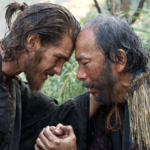




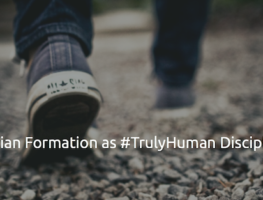
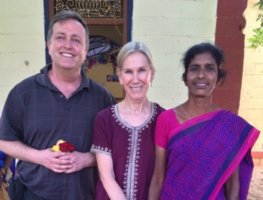
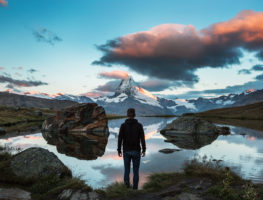
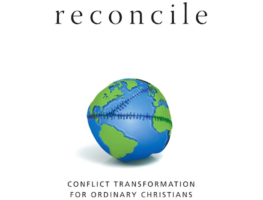
Missio Alliance Comment Policy
The Missio Alliance Writing Collectives exist as a ministry of writing to resource theological practitioners for mission. From our Leading Voices to our regular Writing Team and those invited to publish with us as Community Voices, we are creating a space for thoughtful engagement of critical issues and questions facing the North American Church in God’s mission. This sort of thoughtful engagement is something that we seek to engender not only in our publishing, but in conversations that unfold as a result in the comment section of our articles.
Unfortunately, because of the relational distance introduced by online communication, “thoughtful engagement” and “comment sections” seldom go hand in hand. At the same time, censorship of comments by those who disagree with points made by authors, whose anger or limited perspective taints their words, or who simply feel the need to express their own opinion on a topic without any meaningful engagement with the article or comment in question can mask an important window into the true state of Christian discourse. As such, Missio Alliance sets forth the following suggestions for those who wish to engage in conversation around our writing:
1. Seek to understand the author’s intent.
If you disagree with something the an author said, consider framing your response as, “I hear you as saying _________. Am I understanding you correctly? If so, here’s why I disagree. _____________.
2. Seek to make your own voice heard.
We deeply desire and value the voice and perspective of our readers. However you may react to an article we publish or a fellow commenter, we encourage you to set forth that reaction is the most constructive way possible. Use your voice and perspective to move conversation forward rather than shut it down.
3. Share your story.
One of our favorite tenants is that “an enemy is someone whose story we haven’t heard.” Very often disagreements and rants are the result of people talking past rather than to one another. Everyone’s perspective is intimately bound up with their own stories – their contexts and experiences. We encourage you to couch your comments in whatever aspect of your own story might help others understand where you are coming from.
In view of those suggestions for shaping conversation on our site and in an effort to curate a hospitable space of open conversation, Missio Alliance may delete comments and/or ban users who show no regard for constructive engagement, especially those whose comments are easily construed as trolling, threatening, or abusive.